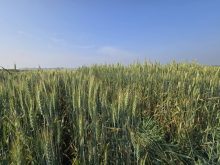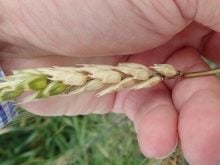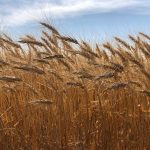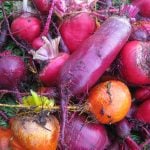Farmers in Manitoba are advised to watch their crops for signs of stripe rust.
The latest wind trajectory analysis from Agriculture and Agri-Food Canada and Environment and Climate Change Canada suggests some crops may be in the risk zone.
The disease has been a problem in the U.S. Pacific Northwest, Kansas and Nebraska, according to a June 21 report from the Prairie Crop Disease Monitoring Network.
Read Also

Prairie spring wheat looks like a bumper crop
Canada will likely set a new record for spring wheat yields this year, topping the previous mark of 54.1 bushels an acre set in 2020.
“Recent stripe rust observations from North Dakota, South Dakota, Minnesota and Wisconsin bring the stripe rust issue very close to the Prairies, especially the central to eastern regions,” the network reported, and the pathogen load from the U.S. could get heavier in coming weeks if rain continues.
”This would result in more rust spores being available to be blown into the Prairie region, as well as more northerly rust development into the Dakotas and Minnesota/Wisconsin.”
Why it matters: Wind trajectories indicate whether a rust problem elsewhere on the continent is likely to blow in here.
Conditions reported from June 11-17 are based on reverse trajectories. Those are defined as “air currents that are tracked back in time from specified Canadian locations over a five-day period prior to their arrival date.”
Greater risk of rust occurs if those trajectories track back to infected regions, are close to the ground and if there were rainfall events in the area. All three conditions were present between June 11-16 near Winnipeg and Selkirk, the network noted. In particular, there may have been high risk during the Father’s Day weekend.
Three trajectories, stemming from Oregon, Idaho, Texas, Oklahoma, Kansas and Nebraska, converged on Winnipeg June 15, ranging in altitude between 500 and 1,500 metres. The 25 millimetres of rain that hit Winnipeg over the weekend may have moved spores down and introduced them to crops.
Rainfall
Plants are most at risk from flag leaf to flowering.
According to the June 25 Manitoba Agriculture crop report, winter wheat is advancing quickly. Crops had headed out and flowered, and most fungicide application against fusarium was done. Most spring wheat ranged from the three-leaf stage to stem elongation.
Higher rainfall levels can influence rust development and spread. Almost all of central Manitoba, most of western Manitoba and much of the Interlake had registered over 150 per cent of normal precipitation this season as of June 23, according to Manitoba Agriculture.
Farmers are advised to check their fields, especially if growing susceptible varieties of winter and spring wheat. Most winter wheat varieties are resistant to stripe rust, the network report noted.
AAC Wildfire, one of Manitoba’s most popular winter wheat varieties, is one example. It accounted for 43.2 per cent of seeded winter wheat acres covered by the Manitoba Agricultural Services Corporation. Emerson, at 22 per cent of acres, is considered moderately resistant.
Those who opted for AC Radiant, CDC Buteo, AAC Elevate, Broadview or CDC Falcon last fall may want to scout. AAC Brandon and AAC Starbuck, Manitoba’s top spring wheat varieties last year, are moderately resistant.
A full list of susceptible and resistant varieties can be found in the 2024 edition of Seed Manitoba.
So far, Manitoba Agriculture has heard some reports of stripe rust on wheat. It can also affect barley and oats.
“Most of our wheat varieties have pretty good resistance to stripe rust, and so do our winter wheat varieties,” said Manitoba Agriculture crop pathologist David Kaminski during a June 26 Crop Talk webinar.
“So even though it’s arrived, a lot of these crops are getting to a stage where the development might not have a big impact on yield.”
Fungicide treatments, if necessary, are best done when the flag leaf has fully emerged, Kaminski said. Later seeded crops should be watched closely, since there’s more time for infection to develop before heading.
Other concerns
Conditions in Manitoba are also favourable for development of tan spot (septoria complex) and bacterial diseases such as bacterial leaf streak and halo blight on oats, Kaminski said.
“We have heard reports from the field and seen pictures of tan spot, which is one of the fungal diseases I have not yet seen or heard a lot about.”
Kaminski is also concerned about fusarium head blight.
“If growers are going to be applying a fungicide, they may want to wait for the timing that’s appropriate for fusarium head blight. That’s more towards when the heads have fully emerged from the boot — a little bit later than the flag leaf stage —rather than going with two different applications.”
If the crop is delayed but disease is already evident, producers may consider a two-time application, Kaminski added.
The Prairie Crop Disease Monitoring Network at prairiecropdisease.com has timely information and disease management strategies.
















